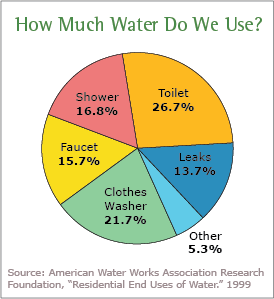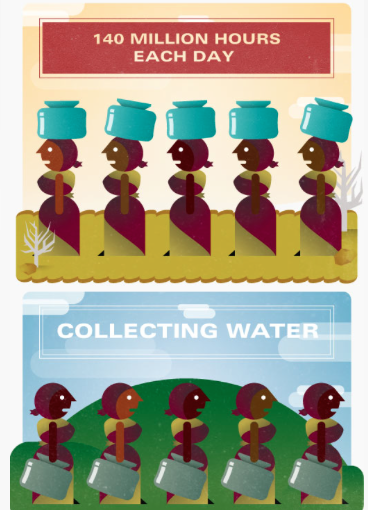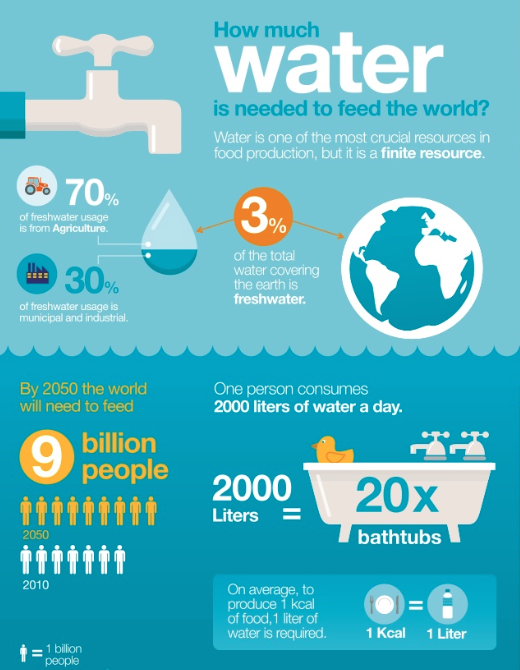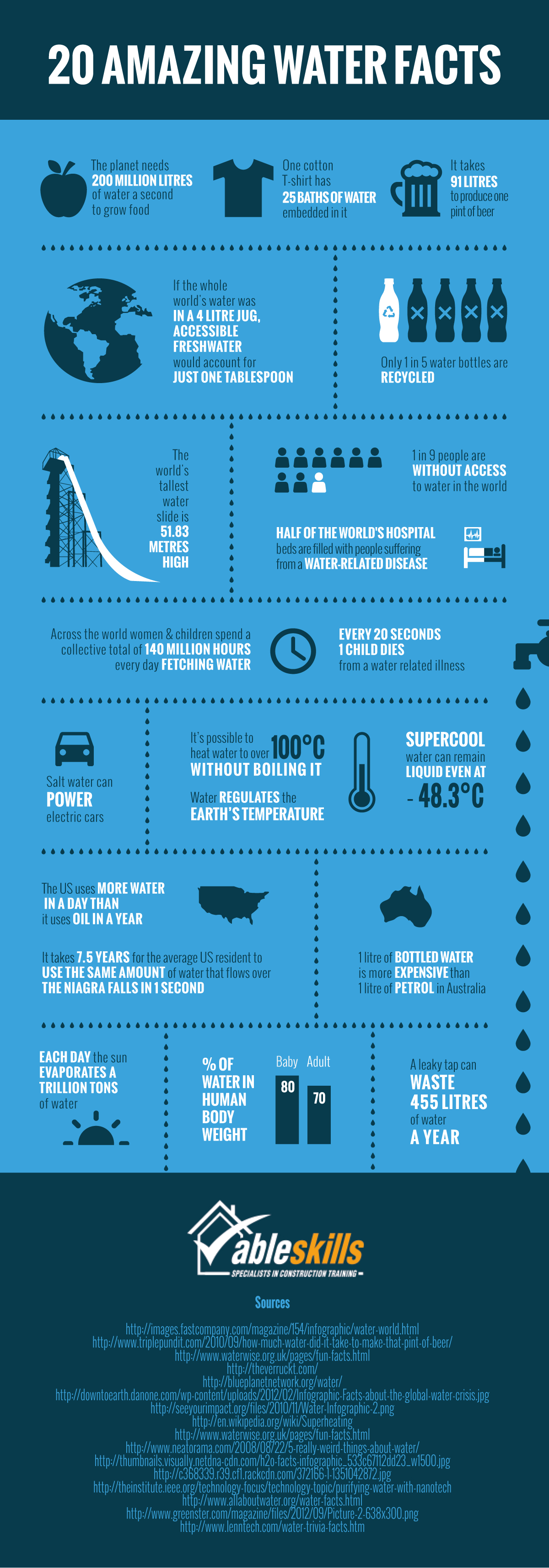
How often do we stop and think about where we will get our next glass of drinking water, when we will next bathe or where we will go the bathroom? Many of us take quick and easy access to clean, safe water for granted, but the fact is that an estimated 750 million people—roughly two and half times the U.S. population—lack that privilege in developing countries around the world, especially in rural areas. Global Citizen estimates that half of all under-nutrition globally is caused by the lack of access to safe drinking water, sanitation and hygiene. These conditions also increase overall mortality; 842,000 people died in 2012 due to inadequate drinking water, sanitation and hand hygiene.
Dirty water and unhygienic human waste removal are the fifth largest cause of mortality in women around the world, leading to more deaths than breast cancer, diabetes and AIDS. The development organization WaterAid said that one in 10 women do not have access to clean water, while one in three—more than 1 billion women—do not have access to a healthy toilet. According to research from the Seattle-based Institute of Health Metrics, WaterAid reports that roughly 800,000 women die annually due to a lack of access to clean water and safe toilets. Inadequate water safety makes it increasingly difficult to manage menstrual hygienically and safely birth children.
Children are also at increased risk for water-related disease. According to World Vision, nearly 1,600 children under age 5 die each day from diarrhea caused by dirty water, poor sanitation, and improper hygiene. Diarrhea is the fourth leading cause of child mortality globally. The World Health Organization (WHO) reports that approximately 577,500 children under age 5 died in 2013 from diarrhea, the majority from water-related causes. It is estimated that 58 percent of cases of diarrhea in middle- and low-income countries can be attributed to inadequate drinking water, poor hand hygiene and inadequate sanitation.
[youtube https://www.youtube.com/watch?v=ageyRuX5kd4]
Upwards of 36 percent of the world’s population lacks access to improved sanitation, defined as a facility that ensures the hygienic separation of human excrement from human contact. One billion people still go to the bathroom outdoors, which pollutes the immediate area and can contaminate water supplies in a community. It also puts women and girls more at risk for sexual assault. According to Burden of disease from inadequate water, sanitation and hygiene in low- and middle-income settings, 280,000 people die each year from diarrhea caused by inadequate sanitation.
Another 297,000 die from diarrhea due to inadequate hand hygiene. Regular handwashing is so crucial for helping people to stay healthy and for preventing the spread of germs to others. Washing hands with soap reduces the risk diarrheal disease by approximately 23 percent.
An estimated 502,000 people die annually from preventable cases of diarrhea caused by inadequate drinking water. According to TreeHugger, 1.8 billion people worldwide drink water that is contaminated with feces. Without clean water nearby, females in developed countries are typically tasked with fetching water from wells, spending up to 25 percent of their day on this task. This takes women away from a job or from household tasks and children away from schools to travels. It is estimated that women and children around the world collectively spend 200 million hours daily transporting water.
“This completely unacceptable situation affects women and girls’ education, their health, their dignity and ultimately, in too many cases, results in an early and needless death,” said WaterAid CEO Barbara Frost in a statement.
The positive news is that more than half of the world’s population now has a piped drinking water connection to their homes, which is considered the highest level of water access. Between 1990 and 2012, more than 2 billion people gained access to cleaner drinking water, nearly 2 billion people gained access to improved sanitation, and the percent of the population who defecate out in the open decreased to 14 percent, according to the WHO’s Progress on Drinking Water and Sanitation—2014 Update. However 2.5 million do not use an improved sanitation facility, and more than 700 million people still lack easy access to an improved source of drinking water.
 It is recommended that 5 gallons of water is needed daily per person to cover basic hygiene and food hygiene needs. While the average American uses about 100 gallons of water daily, a sub-Saharan African uses just 2 to 5 gallons of water daily, according to the United States Environmental Protection Agency (EPA). Americans use more water daily by flushing the toilet than any other activity—and a running toilet can waste up to 200 gallons of water per day—so water waste is a concern here and abroad. In many countries, water use is largely wasteful and unregulated, with rampant pollution. Approximately 90 percent of untreated sewage is dumped into rivers, lakes, and oceans, harming ecosystems and costing billions of dollars in environmental damage.
It is recommended that 5 gallons of water is needed daily per person to cover basic hygiene and food hygiene needs. While the average American uses about 100 gallons of water daily, a sub-Saharan African uses just 2 to 5 gallons of water daily, according to the United States Environmental Protection Agency (EPA). Americans use more water daily by flushing the toilet than any other activity—and a running toilet can waste up to 200 gallons of water per day—so water waste is a concern here and abroad. In many countries, water use is largely wasteful and unregulated, with rampant pollution. Approximately 90 percent of untreated sewage is dumped into rivers, lakes, and oceans, harming ecosystems and costing billions of dollars in environmental damage.
Water conservation efforts are being urged as a growing global population, water pollution and climate change make water security a concern for us all. Increasing groundwater is needed for farming and industry, as well as personal consumption. Around 80 percent of India’s population, for example, relies on groundwater for drinking to avoid bacteria-infested surface waters.
A report released March 20 by the United Nations predicts an international water deficit of 40 percent in just 15 years unless countries dramatically change their usage of water. The UN’s 2015 World Water Development report predicts that as underwater reserves dwindle, global water demand will increase 55 percent by 2050. Without a dramatic change in the collective usage and stewardship of water resources, the world will have only 60 percent of the water it needs in 2030, the report said. As a result, there would likely be an increase in crop failures, ecosystem deterioration and industry collapse, more frequent violent conflicts over access to water and worsened poverty and disease.
“Unsustainable development pathways and governance failures have affected the quality and availability of water resources, compromising their capacity to generate social and economic benefits,” the report said. “Unless the balance between demand and finite supplies is restored, the world will face an increasingly severe global water deficit.
Learn more at:



[…] month, we addressed the rising threat of water scarcity and safety to the health of the planet due to climate change, pollution and a growing global population. A […]